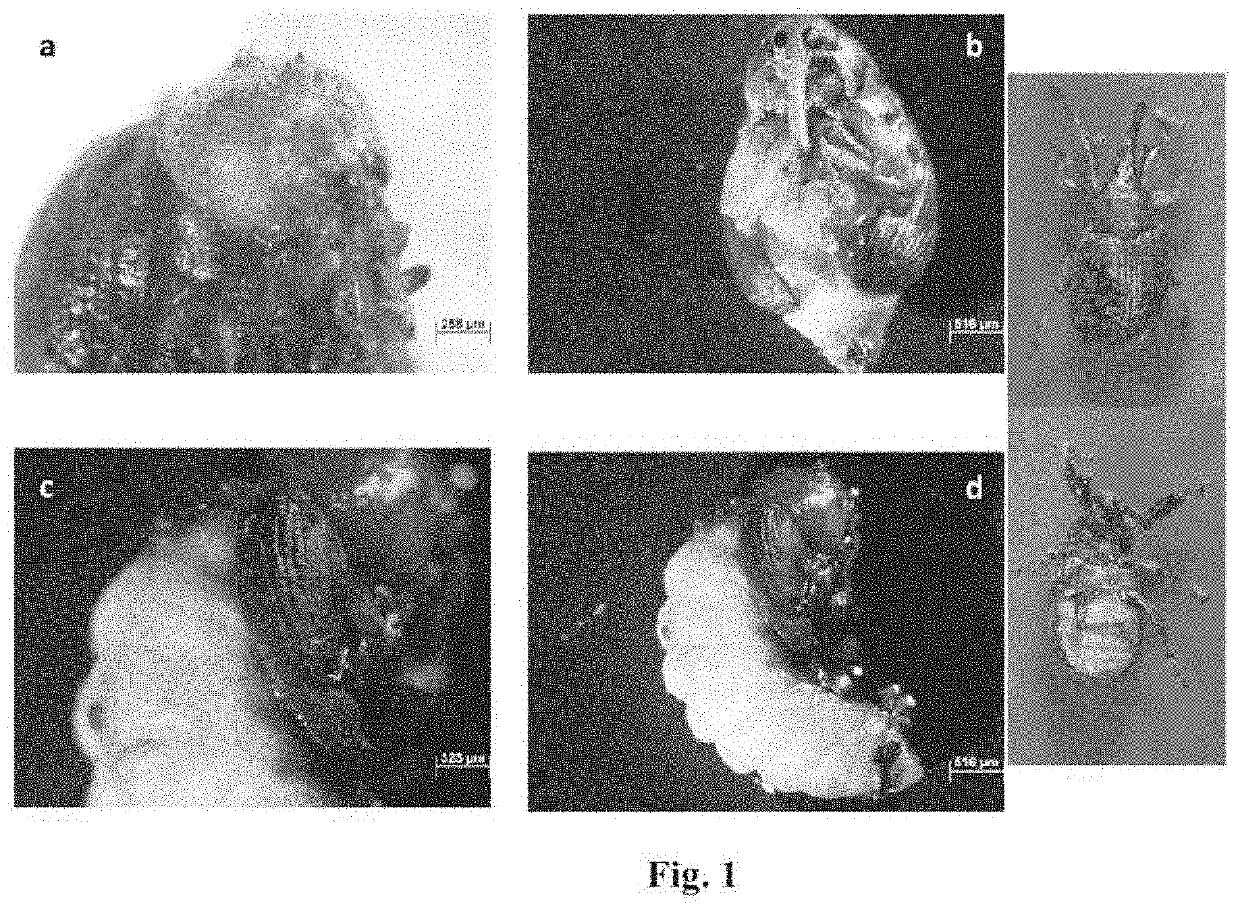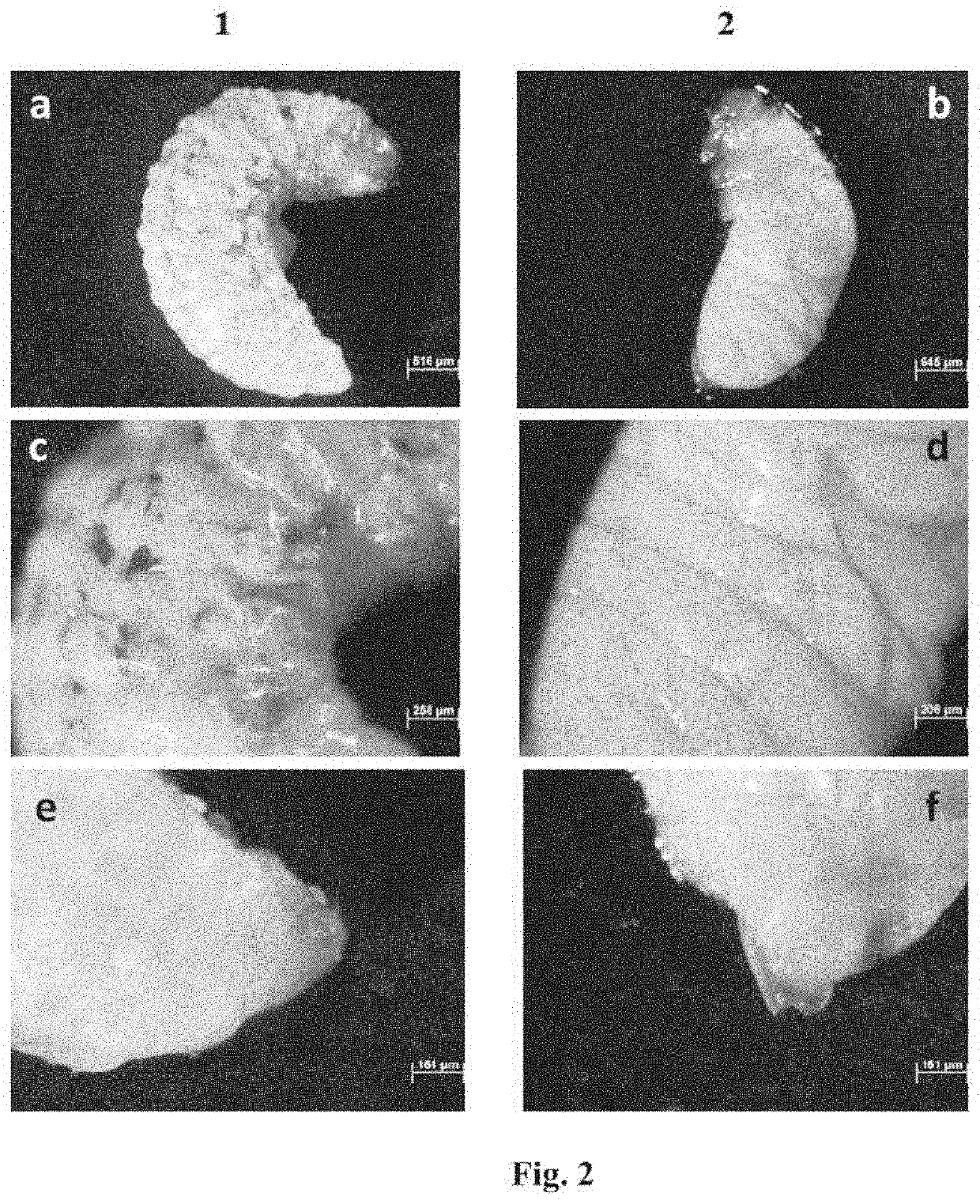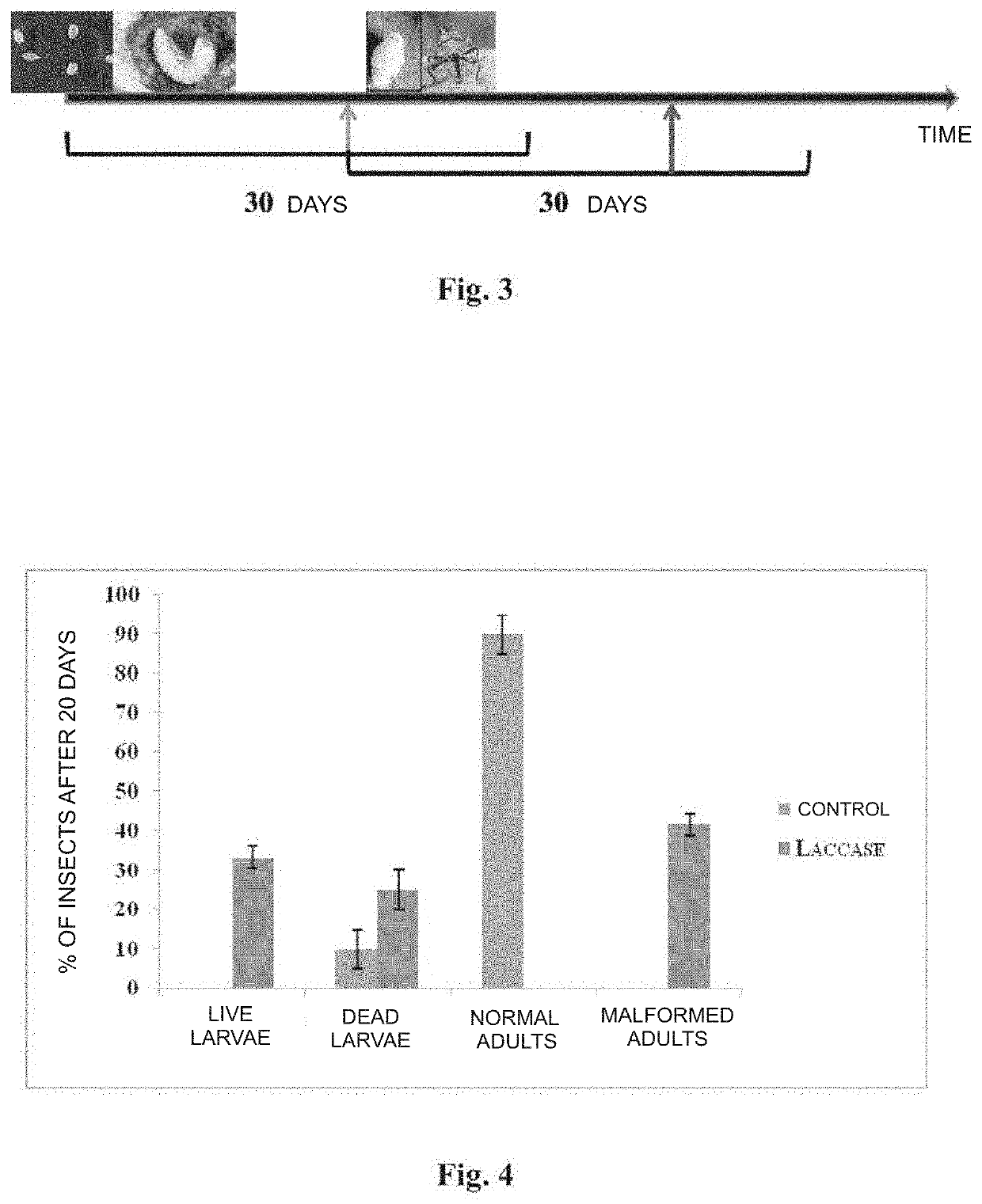Genetic control method and compositions against insect pests in cotton plants by the silencing of genes of the laccase family
a technology of laccase and gene expression, applied in the field of insect pest control, can solve the problems of environmental degradation, pesticide use costs more than 10 billion dollars a year, and 25% of the entire production potential is still lost due to pest attack, so as to reduce or inhibit the expression of laccase genes and suppress gene expression
- Summary
- Abstract
- Description
- Claims
- Application Information
AI Technical Summary
Benefits of technology
Problems solved by technology
Method used
Image
Examples
example 1
Synthesis of dsRNA of Laccase 2 of Anthonomus grandis
[0070]Eggs, larvae and adult insects of A. grandis were created in the Embrapa Genetic Resources and Biotechnology Laboratory of Bioecology Semiochemicals of Insects, in Brasilia-DF. The colony was fed with artificial diet as described by Monnerat and colleagues (MONNERAT, R. G. et al. “Criação massal do bicudo do algodoeiro Anthonomus grandis em laboratório”. Technical Release—Embrapa Genetic Resources and Biotechnology, vol. 46, p. 4, 2000. MONNERAT, R. G. et al. “Parâmetros bionômicos do bicudo do algodoeiro (Anthonomus grandis) criado em dieta artificial para a realização de bioensaios”. Embrapa Genetic Resources and Biotechnology—Bulletin of Research and Development, vol. 29, p. 20, 2002) and maintained at 26+2° C., relative humidity of 60±10% and photophase of 12 hours.
[0071]For cloning and sequencing of a fragment of laccase 2 of A. grandis, total RNA was extracted from eggs, larvae and adult insects using Trizol (Invitrog...
example 2
Bioassays on Microinjection of dsRNA and Evaluation of the Silencing of the Gene Encoding Laccase 2 in A. grandis
[0076]A cDNA sequence of the Laccase 2 gene in the transcriptome of Anthonomus grandis, which size was 1817 pb (SEQ ID NO: 1), was identified. Within this sequence we selected a region of 332 pb (SEQ ID No. 2) to serve as a template for the synthesis of dsRNA molecules, as described in Example 1. This dsRNA was utilized in microinjection assays and the effects of the silencing were evaluated by morphological analysis, mortality and reduced expression levels of the laccase 2 gene by real time PCR.
[0077]Morphological Analysis and Mortality
[0078]The bioassay on boll weevil was performed by microinjection of dsRNA. Larvae were weighed so that only individuals weighing between 30 and 40 mg were used. In each test, 1 μL containing 500 ng of dsRNA was injected into the dorsal region of 3rd instar larvae, and measures were taken not to damage their dorsal artery. A Gas tight (Ha...
PUM
| Property | Measurement | Unit |
|---|---|---|
| temperature | aaaaa | aaaaa |
| temperature | aaaaa | aaaaa |
| temperature | aaaaa | aaaaa |
Abstract
Description
Claims
Application Information
 Login to View More
Login to View More - R&D
- Intellectual Property
- Life Sciences
- Materials
- Tech Scout
- Unparalleled Data Quality
- Higher Quality Content
- 60% Fewer Hallucinations
Browse by: Latest US Patents, China's latest patents, Technical Efficacy Thesaurus, Application Domain, Technology Topic, Popular Technical Reports.
© 2025 PatSnap. All rights reserved.Legal|Privacy policy|Modern Slavery Act Transparency Statement|Sitemap|About US| Contact US: help@patsnap.com



